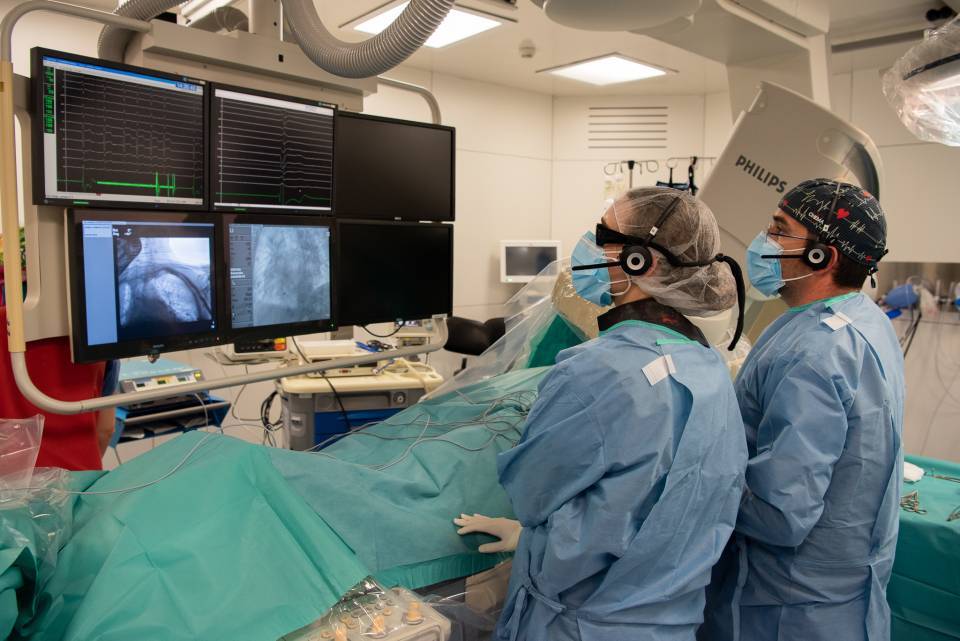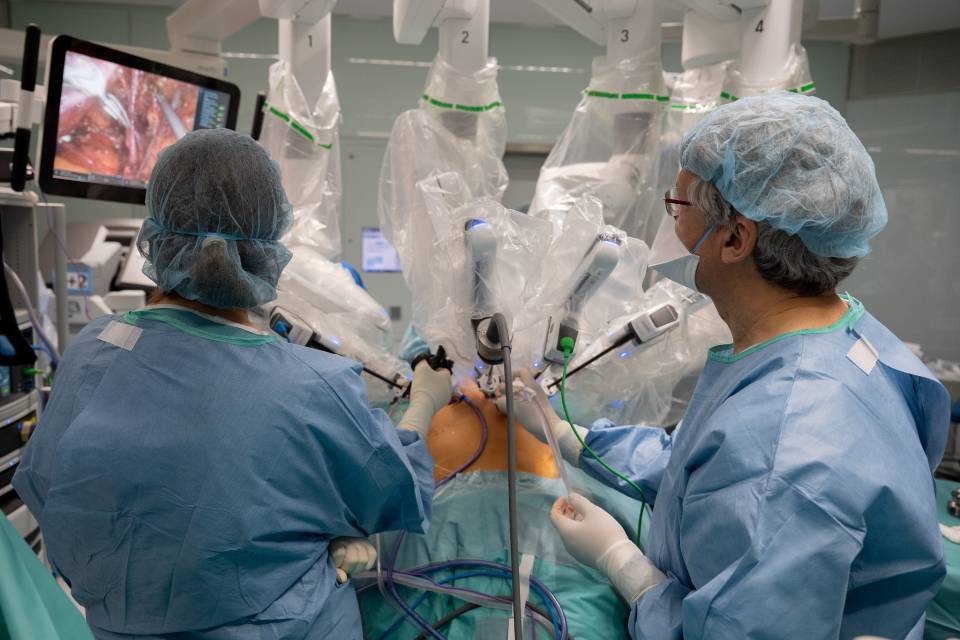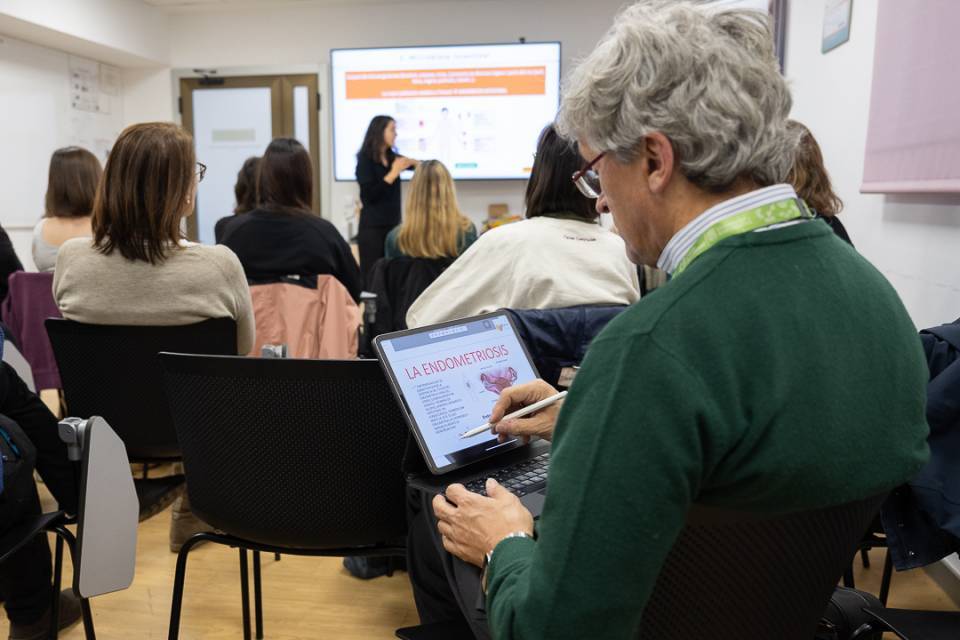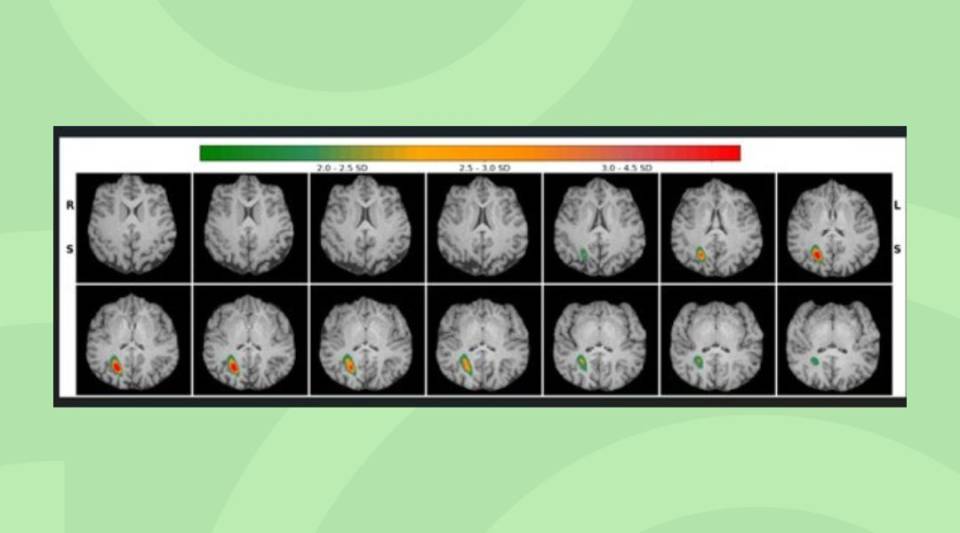The Hospital Clínic de Barcelona consolidates a new physiologic cardiac pacing programme for heart failure patients. The programme is led by the Hospital Clínic Cardiovascular Institute Arrhythmia Unit headed by Dr. Lluís Mont, together with Dr. JM Tolosana and Dr. Margarida Pujol, both cardiologists in the Unit and the Hospital Clínic Cardiology Service. To date, physiologic pacing has been implemented 166 times. This is a pioneering programme in Catalonia. Recently, a study on this Hospital Clínic programme was published in the journal Pacing and Clinical Electrophysiology.
The process consists of implanting a pacemaker with physiologic pacing (stimulation of the cardiac conduction system), which activates the two heart ventricles via their natural pathway. This technique known as His-bundle pacing or left bundle branch pacing emerged recently and is characterized by its use of the heart’s electrical pathways, which allow for a natural contraction of the heart similar to that found in any healthy person.
This type of pacemaker can be implanted in patients with: a block (the heart beats very slowly) and patients with heart failure. Up until now, with the 'traditional’ pacemaker, the right ventricle was activated and then the left, and this often caused asynchrony. Now, both ventricles are stimulated in order to avoid asynchrony.
The conventional pacemaker stimulates the right ventricle directly through the heart muscle, causing a less effective contraction of the heart. Physiologic pacing, on the other hand, activates the heart via its conducting tissue, thereby achieving more effective contractions.
The pacemaker is inserted using 'sheathes' that direct the electrode in order to implant the pacemaker. The operation lasts around 1 hour 30 minutes and does not require open-heart surgery. This also allows patients to recover more quickly.
Heart failure, the leading cause of hospitalization in people over 65 years old
Heart failure occurs when the heart is unable to pump blood properly to the rest of the organs in the body. As a result, people with heart failure feel tired, weak or have difficulties breathing. It is the most common cause of hospitalization in people over 65 years old. Heart failure often appears progressively, with daily episodes in which the symptoms increase. However, in some cases it can be acute, in other words occur in people with no previous heart issues.
A percentage of patients with heart failure and heart conduction disorders benefit from the implantation of a special pacemaker. The therapy is called cardiac resynchronization and it aims to correct these conduction disorders. This type of pacing requires the implantation of 3 electrodes (one in the atrium, one in the right ventricle and another in the left ventricle) and it is an effective treatment for these patients. However, due to anatomical variations, the implantation can sometimes be long and difficult. In the future, physiologic pacing may be an alternative to cardiac resynchronization therapy and be able to facilitate the implantation of these devices (since it does not require the implantation of the electrode that paces the left ventricle), thus opening the door to new indications.
Reference article:




